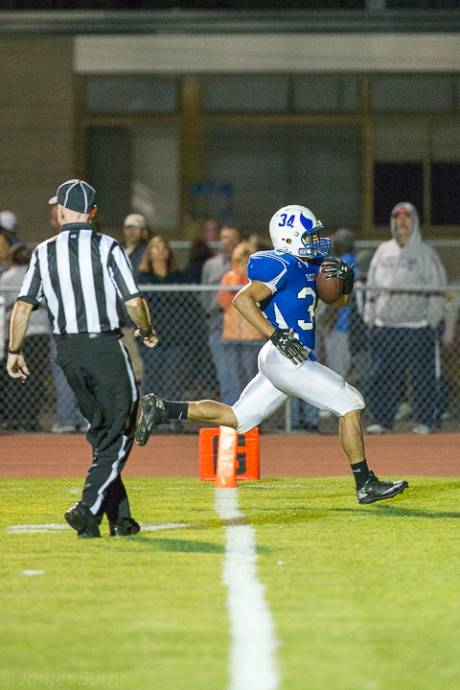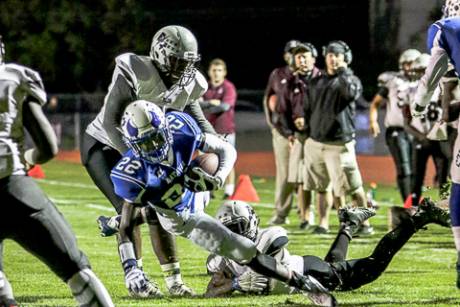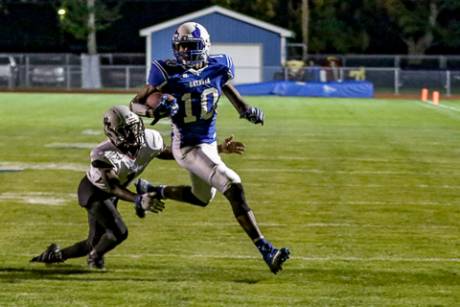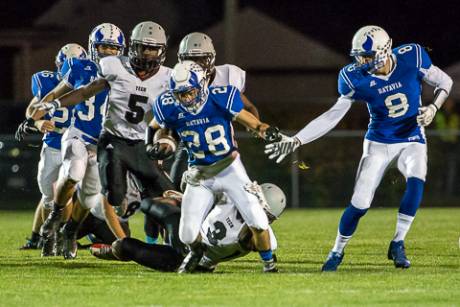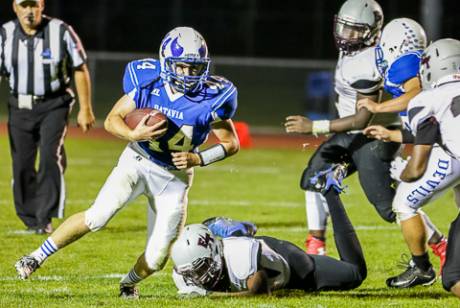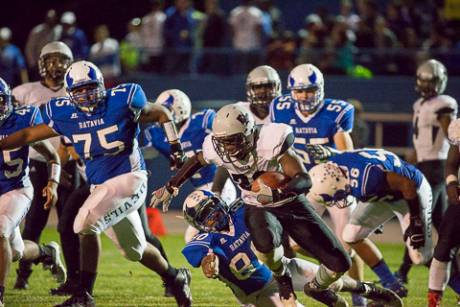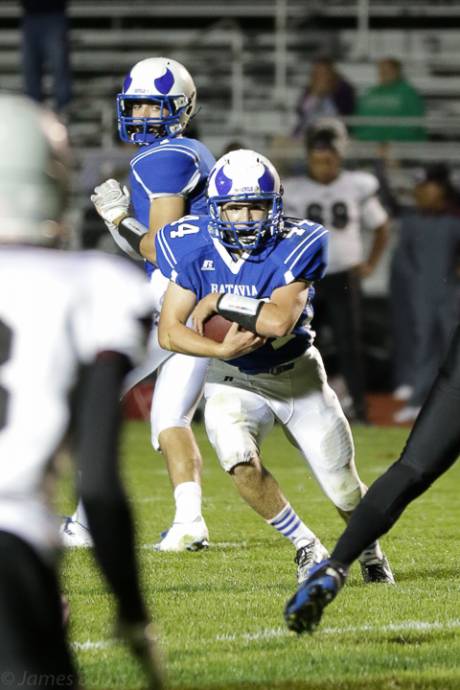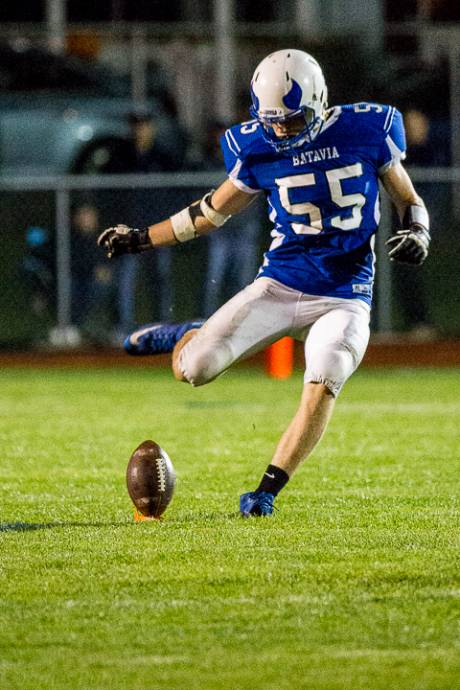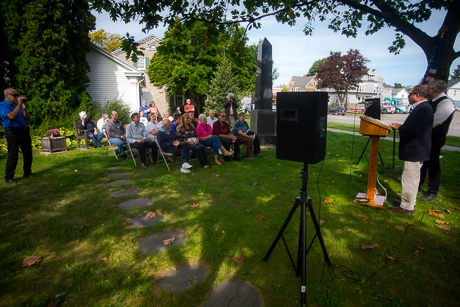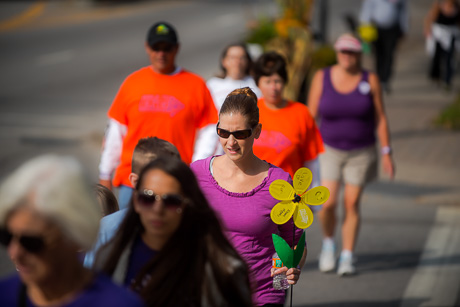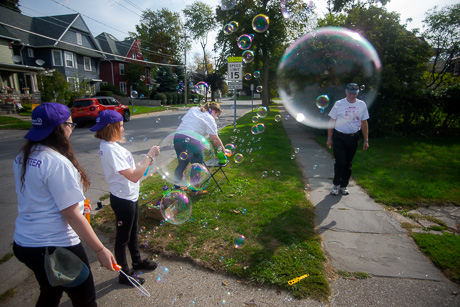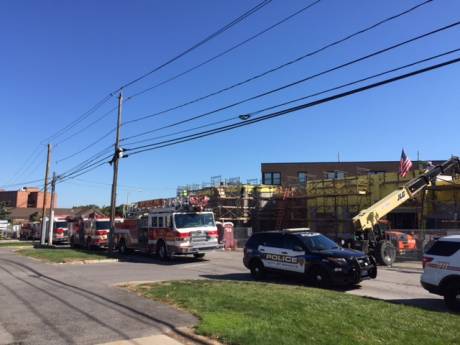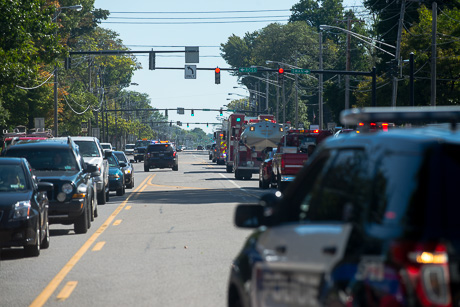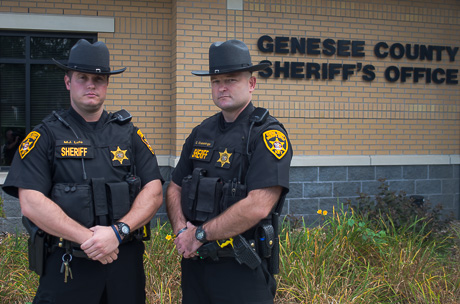Photo by Howard Owens
Story by Amanda Dolasinski, The Fayetteville Observer
Story republished with permission
Less than four seconds after Sgt. Shaina Schmigel jumped from a C-17 as part of a nighttime airborne operation, she was being dragged behind the aircraft. She became entangled in the next jumper's suspension lines and died of severe neck injuries.
Schmigel, 21, was killed after she jumped with a T-11 parachute at Holland Drop Zone on May 30, 2014. An investigation into her death found the most glaring error was the jump master's failure to inspect the static lines of her parachute.
Schmigel was an intelligence analyst with the 37th Engineer Battalion, 2nd Brigade Combat Team. She joined the Army in 2010 and had been assigned to 2nd Brigade since June 2011.
Paratroopers administered first aid when they found her on the ground, but she was declared dead at the drop zone.
Changes in airborne operations were formed from recommendations made by investigators after Schmigel's death, said Master Sgt. Patrick Malone, a spokesman for the 82nd Airborne Division.
"This accident was thoroughly investigated, and the entire airborne community has implemented measures that will mitigate the probability of similar accidents happening in the future," he said. "Airborne operations are inherently high-risk, and we are committed to ensuring they are executed as safely and effectively as possible."
News of Schmigel's death has been hard to process for her mother, Karie. The two were close, and Karie had just left Fort Bragg after spending Mother's Day weekend with her daughter.
The day following Schmigel's fatal jump, Karie said she knew something wasn't right.
"I was trying to call her that day," Karie said from her home in New York. "I went to call Shaina. Voicemail, voicemail, voicemail."
Karie stepped outside her home to continue calling. That's when she said the men in uniforms pulled up.
"I'll never forget that," Karie said, sobbing. "I'm like, 'No, not my baby girl.' I knew right away."
Maj. Gen. John Nicholson, then-commanding general of the 82nd Airborne Division, ordered an investigation into Schmigel's death in June 2014.
The nearly 300-page investigation includes airborne operation briefings and manifests, interviews with witnesses and flight data.
Investigators said there is no evidence that the aircrew, aircraft or weather contributed to Schmigel's death, but there were several areas of negligence that needed to be addressed as safety factors, according to the report obtained by The Fayetteville Observer through the federal Freedom of Information Act.
The report found:
Following the death, the safety who failed to check Schmigel's static line was recommended to be permanently decertified from duties as a jump master. That person's name is redacted in the report.
The status of the safety was not current at the time of the airborne operation. The safety was out of compliance by five days for completing baseline certification, according to the report.
The safety also skipped the jump master briefing before the operation the day of Schmigel's death, according to the report.
Investigators made eight other recommendations to correct or improve operations and procedures surrounding airborne operations.
Investigators also found the airborne operations called for two safeties per door, but that's not what happened on Schmigel's flight. One "simply stood by" as the other worked, according to the report.
Another concern about the safeties was that all four safeties on the aircraft -- two on the right door, two on the left door -- were rookies, performing their first duties as safeties, according to the report.
Investigators recommended the Advanced Airborne School direct safeties be paired with a more advanced jump master. Also, no more than half of the safeties assigned to a flight can be on their first duty, according to the report.
Safeties also must inspect static lines all the way down to the curved pin protector flap, which protects the main curved pin until it is activated to release the parachute. One of the safeties told investigators that static lines were only inspected to the pack tray, not to the protector flap that covers the pin.
Investigators believe Schmigel's static line was loose and became caught under the protector flap. Since the flap did not open, the main curve pin could not deploy, therefore delaying the release from the pack tray.
A main curve pin's failure to deploy is "a single point of failure," meaning every action after the failure also will not occur, said Maj. Craig Arnold, commander of Fort Bragg's Advanced Airborne School.
After the pin deploys, the deployment bag is released, risers are stretched outward and the parachute inflates.
Jump masters had never seen a curve pin failure due to loose static lines before, and therefore didn't know it was a deficiency, Arnold said.
Arnold, who said he has reviewed the investigation into Schmigel's death, said jump masters took note of the deficiency and immediately began inspecting static lines all the way down to the curve pin protector flap.
Static lines can become loose as a jump master runs his or her fingers under them or, if paratroopers are sitting in a C-130, the paratrooper gets stuck in the netted seat, Arnold said. As a second line of defense, riggers are called to inspect the static lines after the jump master to ensure the lines are tight and not caught under the flap, Arnold said.
"Now that we have identified (the deficiency), we put proper measures in place to prevent it from happening again," Arnold said.
Another immediate change was an update by the Advanced Airborne School requiring jump masters to check the universal static lines modified three times. A memo released by the school in June 2014 includes a note in all capital letters: Do not rush the inspection of the universal static line modified in order to make time to exit paratroopers.
The airborne operation on May 30, 2014, was designed to increase jumper proficiency and increase proficiency in airfield clearance missions. The paratroopers were to be dropped onto Holland Drop Zone, practice seizing the airfield, conduct accountability of personnel and equipment, then redeploy to Fort Bragg.
The training mission began at 1 p.m. with the jump master briefing in the 37th Engineer Battalion conference room. Both safeties who worked on the right door -where Schmigel was positioned - missed the briefing, according to the report.
One of the safeties told investigators he missed the briefing because he was on a jump follow-on mission at the time and was back briefed by his commander. The other safety did not offer a reason for missing the briefing, according to the report.
Paratroopers conducted sustained airborne and mock door training at Green Ramp at 4:30 p.m. About two hours later, the paratroopers picked up their parachutes and were inspected by jump masters.
Paratroopers loaded the C-17 about 7:30 p.m. for the scheduled drop at 9:30 p.m., according to the report.
When the paratroopers stepped on the aircraft, the seat configuration didn't match the original plan, so four jumpers switched to be part of the plane's first pass rather than its second.
Schmigel was among those four.
She was initially supposed to be the 20th jumper but was moved to be the 16th jumper.
Photos taken as evidence show that Schmigel's combat equipment was rigged properly, according to the report.
When the appropriate commands were given, jumpers began to exit the aircraft. About halfway through, a gap opened, causing jumpers - including Schmigel - to "rush" the door, according to the report.
Because it was dark, the other jumpers didn't realize at the time that had been a problem.
In just two seconds from the time Schmigel jumped from the C-17, her static line became caught under the main curve pin protector flap, causing a delay in her T-11 parachute's deployment sequence. She became a towed jumper, meaning she was being dragged behind the aircraft.
Jump masters can typically tell if a paratrooper becomes towed based on the position of the static line after the jumper exits the aircraft. The static line should hit the middle of the door. If it hits near the bottom of the door, the paratrooper is likely being towed.
Once a paratrooper is towed, all jumps are ceased as safeties work to pull the jumper back into the aircraft, Arnold said. If that fails, the safeties will alert the Air Force's load master, who informs the pilots so they can move to a higher altitude and adjust their flying pattern to set up a retrieval system to pull the jumper inside the aircraft.
When Schmigel was being towed, her feet were pointing away from the aircraft and the top of her upper body was facing the direction of flight, according to the report. Her weight against the static line would have forced her to be generally facing the ground or rotating slightly to her right or left.
She would have been conscious at this time, according to the report.
About two seconds later, Schmigel became entangled in the suspension lines of the parachute of the 17th jumper.
While she was being towed, Schmigel may have been struck by the pack tray from the 17th jumper, according to the report. That jumper, whose name is redacted in the report, said he or she has no memory of colliding with Schmigel.
The suspension lines from that jumper's rear risers became wrapped across her throat, according to the report. The lines lacerated her neck.
The force pulled Schmigel's head back, causing her to rotate vertically around her center of gravity. As her head was pulled back over her feet, her static line was routed over her right shoulder, according to the report.
The rotation caused her static line to come free of the main curved pin protective flap and deploy as designed.
For a fraction of a second, Schmigel was pulled toward the aircraft by her static line and away from the aircraft by the 17th jumper's suspension lines, according to the report.
Investigators used the blood patterns on Schmigel's clothing and equipment, as well as the suspension lines of the 17th jumper, to determine her laceration was caused by the jumper's suspension lines, not Schmigel's static line.
The force of the suspension lines from the jumper broke Schmigel's neck in three places and dislodged her jaw on both sides, according to the report.
Because there was no blood or abrasions on Schmigel's hands, investigators said the ordeal happened so fast she didn't have time to reach up to yank at the lines caught around her neck.
Once the jumpers landed on the drop zone, two soldiers checked each other for injuries.
"Mainly, 'Are you OK?' 'You good?,' " according to a statement from the soldier. "I was extremely tangled up in my chute and began trying to get everything off."
Simultaneously, the second soldier walked over to Schmigel. That soldier, who is only identified as a male, shook Schmigel's shoulder and noticed the injury to her neck.
He screamed for a medic, according to the report.
"I vigorously tried getting everything off so I could help with whatever was going on," according to the first soldier's statement. "I then saw an unconscious soldier laying on the ground, got close enough to see there was a serious injury on the neck of the soldier."
The second soldier said there was no pulse and it seemed the neck was broken, according to the report.
"I ran to the top of the hill we were close to and began spinning a chem light and was screaming for a medic," said the first soldier.
Schmigel's decision to join the Army surprised her mother, but nonetheless, Karie said she was supportive.
Schmigel was an intelligence analyst with the 37th Engineer Battalion, 2nd Brigade Combat Team, according to officials. She joined the Army in 2010 and had been assigned to 2nd Brigade since June 2011.
Later that year, Schmigel deployed to Iraq with the brigade.
Karie said she didn't know her daughter was in Iraq until she called from the country. Schmigel said she didn't want to worry her mother, so she waited until she arrived safely to share the news of her six-month deployment.
The women would video chat regularly, but it was difficult for Karie.
"I'd see missiles. I'd see huge jets flying over," Karie said. "She'd say, 'Mom, relax.' I'd say, 'I love you, but I gotta go. I don't like this.' "
During her daughter's deployment, Karie mailed numerous care packages filled with treats from home. The beef jerky was usually a greasy mess by the time it arrived in Iraq, but Karie said her daughter enjoyed canned soup and gummy worms. She also sent paper, pens, envelopes and stamps to write home, Karie said.
Two weeks before Schmigel's death, Karie said she debated making the nearly 650-mile drive to Fort Bragg from her home in New York. She wasn't going to make the trip but decided to since she would be able to spend Mother's Day with her daughter.
"We weren't going to go see her," Karie said, remembering the plans. "But she was like, 'Mom, it's Mother's Day. I have time for leave.' "
It was the last time Karie would hold her daughter.
"I'm glad I got to see her," Karie said. "Two weeks later, I lost my daughter."
The next time Karie visited Fort Bragg was for All American Week in May 2015. A group of officers arranged to drive Karie and her family to Holland Drop Zone, where they laid yellow flowers in memory of Schmigel.
"They took us to the drop zone where they said they found her body," Karie said.
During the week, Karie said she met with some of her daughter's friends to share their memories of her. The group went to Schmigel's favorite bar, Cadillac Ranch, to line dance.
Karie danced with the friends but felt an emptiness.
"I think my daughter should have been next to me," she said. "I just miss her."
See also: Paratrooper's death prompts 82nd to implement changes to airborne operations
Previously on The Batavian:






